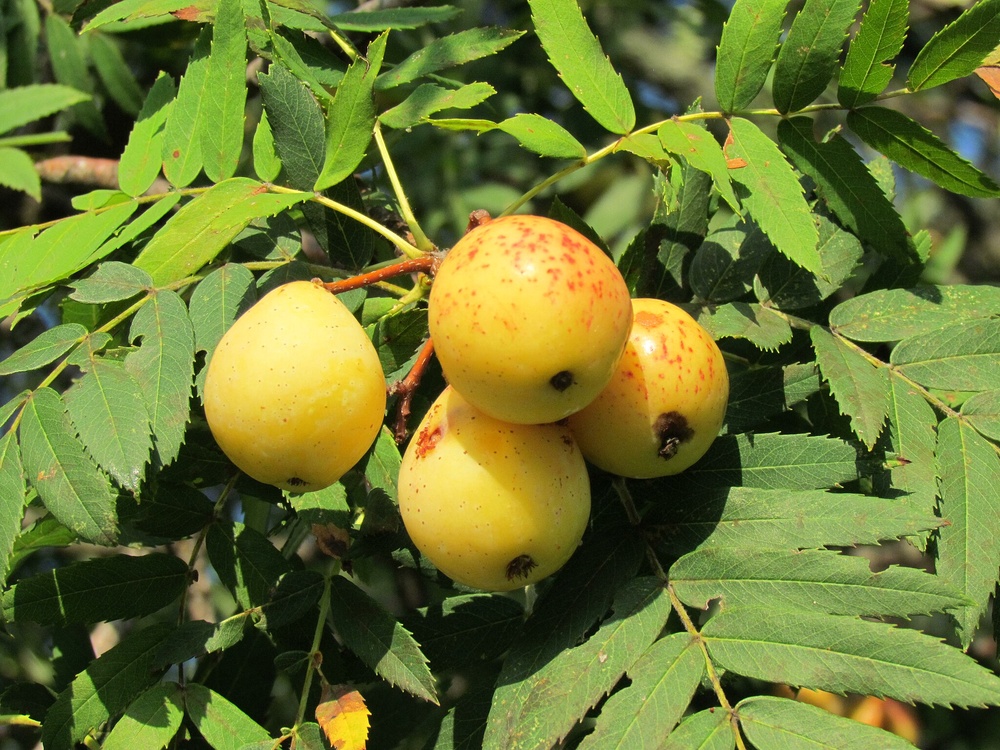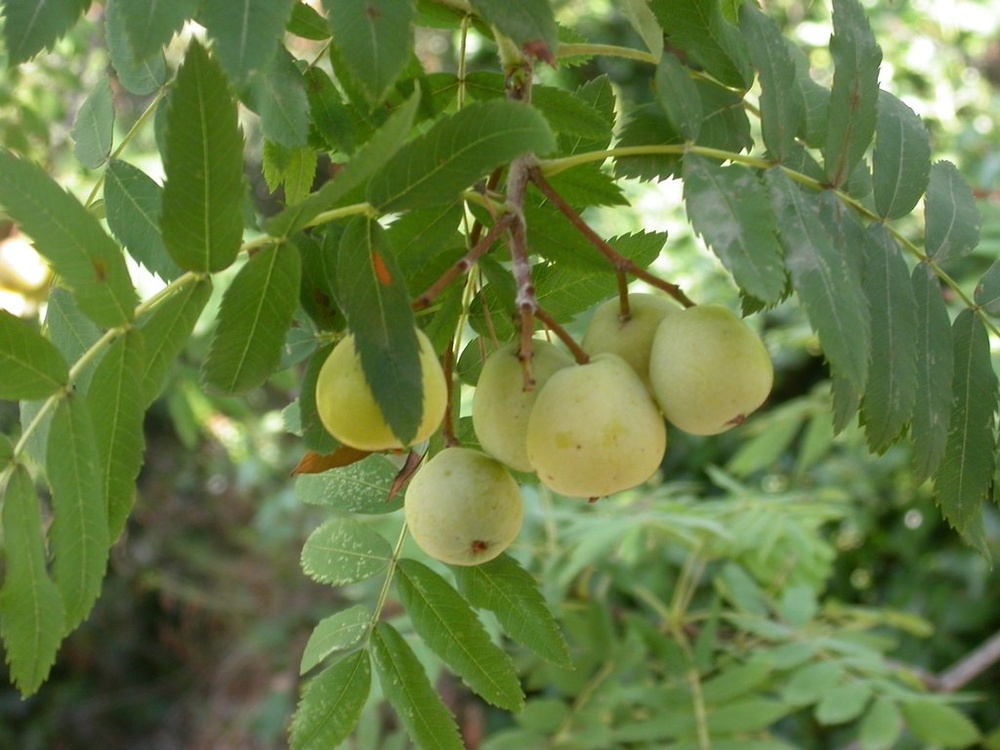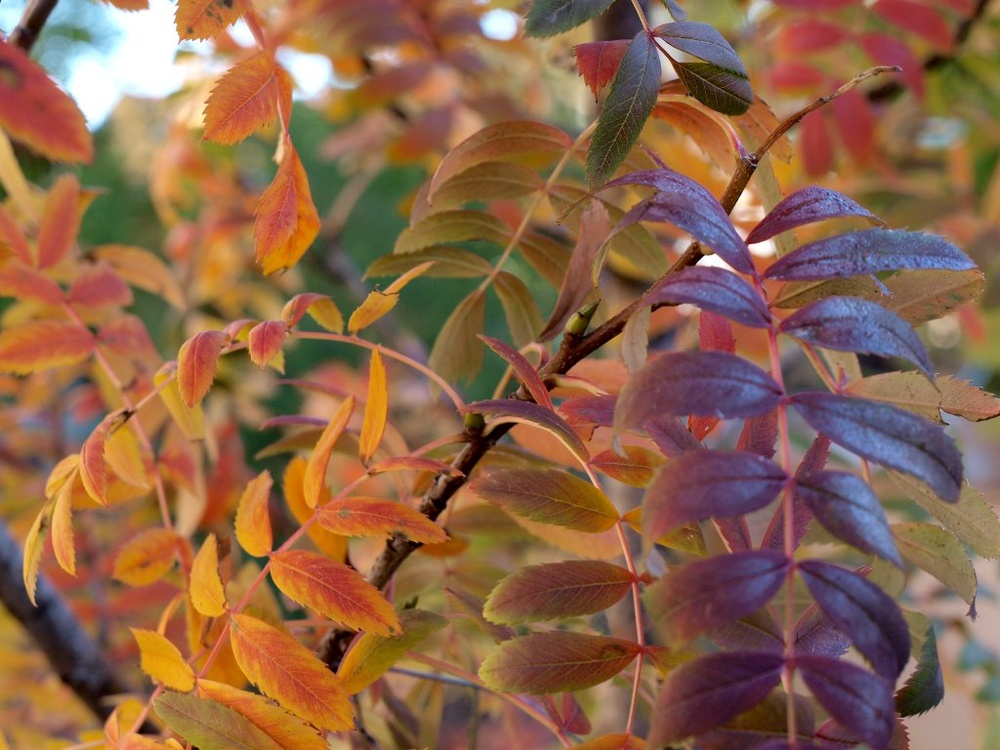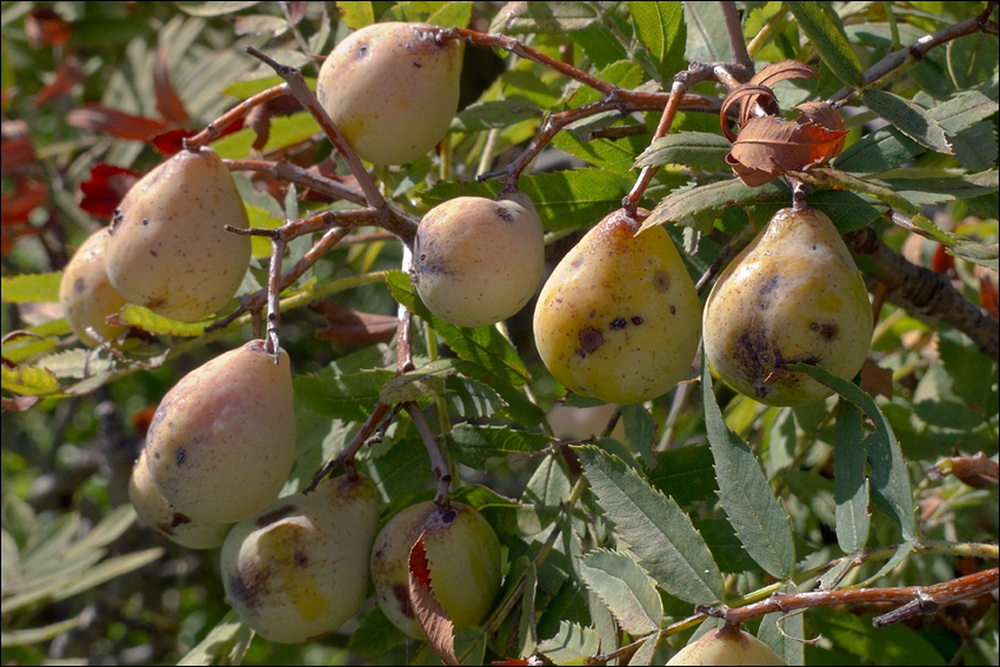Sorbus domestica
Peervormige lijsterbes / Service Tree
Rosaceae (Rozenfamilie)Europe (whole)

Edible plant part (1)
Fruits
Read 'form of consumption' for safe preparation methods
Toxic plant part (1)
Seeds
Service Tree belongs to the small trees-large shrubs in the food forest. In the process of ecological succession it is a mid species. The growth rate is medium. Fully grown the plant has an average height of 10 to 30 meter. and a width of 10 to 25 meter.
The foliage (or leaf cover) is half-open. The Service Tree is decidious. It buds in april and it loses its leaves in november.
This species forms a deep root system. This species is non spreading in the food forest. Service Tree is no nitrogen fixer.
 foto: Octopus, https://commons.wikimedia.org/wiki/File:Sorbus_domestica_9384.jpg
foto: Octopus, https://commons.wikimedia.org/wiki/File:Sorbus_domestica_9384.jpg
 foto: Octopus, https://commons.wikimedia.org/wiki/File:Sorbus_domestica_9384.jpg
foto: Octopus, https://commons.wikimedia.org/wiki/File:Sorbus_domestica_9384.jpg
 foto: Abrahami, https://commons.wikimedia.org/wiki/File:Sorbus-domestica.jpg
foto: Abrahami, https://commons.wikimedia.org/wiki/File:Sorbus-domestica.jpg
 foto: Huerta del Nogal, https://www.flickr.com/photos/huertadelnogal/5148774334
foto: Huerta del Nogal, https://www.flickr.com/photos/huertadelnogal/5148774334
 foto: Amadej Trnkoczy, https://www.flickr.com/photos/atrnkoczy/10670739225
foto: Amadej Trnkoczy, https://www.flickr.com/photos/atrnkoczy/10670739225
Growth factors
- Frost (whole plant)
-
very strong frostcold frostmild frostlight frostno frost
- Frost (flowers)
-
very strong frostcold frostmild frostlight frostno frost
- Light
-
full sunlight shadehalf shadefairly deep shadedeep shade
- Wind
-
strong sea windstrong windsome windshelteredvery sheltered
- Soil texture
-
sandloamlight clayheavy claypeat
- Soil moisture
-
inundationwetmoistdrydrought
- Groundwater level
-
very lowlowmediumhighvery high
- Soil acidity
-
very acidacidneutralalkalinevery alkaline
- Soil fertility
-
very richrichaveragepoorvery poor
Flowering and pollination
- Flowering period (peak)
- end of march, early may, mid may, end of may
- Flowering period (length)
- several weeks
- Pollination vector
- insects
- Plant reproductive fertility
- self-fertile (sf)
Life Span and Plant Health
Disease susceptibility
resistantMain serious pests and diseases
fruit tree cankerHarvest and Consumption
Fruits
- Harvest location edible part
- Above reach, ground layer
- Harvesting period - start
- Early september, mid september, end of september
- Harvesting period - length
- Several weeks
- Harvesting period - recognition
- Easy, hardness
- Harvesting period - uniformity
- Medium
- Suitable harvesting methods
- Hand, simple tool
- Form of consumption
- Fresh, processed
- Natural storability
- Several weeks, week
- Suitable markets
- Niche
- Productive life span - start (year) - minimum
- 3
- Productive life span - start (year) - minimum
- 12
- Productive life span - start (year) - maximum
- 5
- Productive life span - peak (year) - minimum
- 100
- Productive life span - end (year) - maximum
- 300
- Productive life span - end (year) - maximum
- 350









































